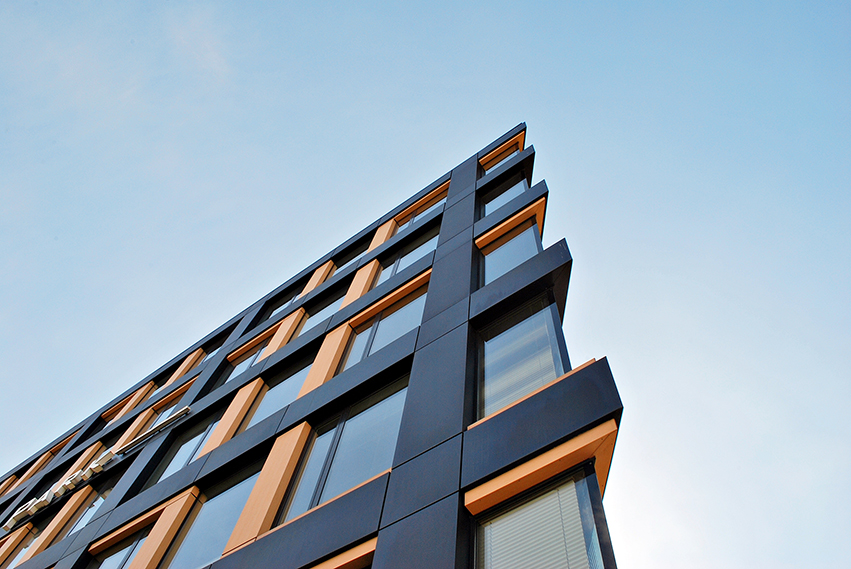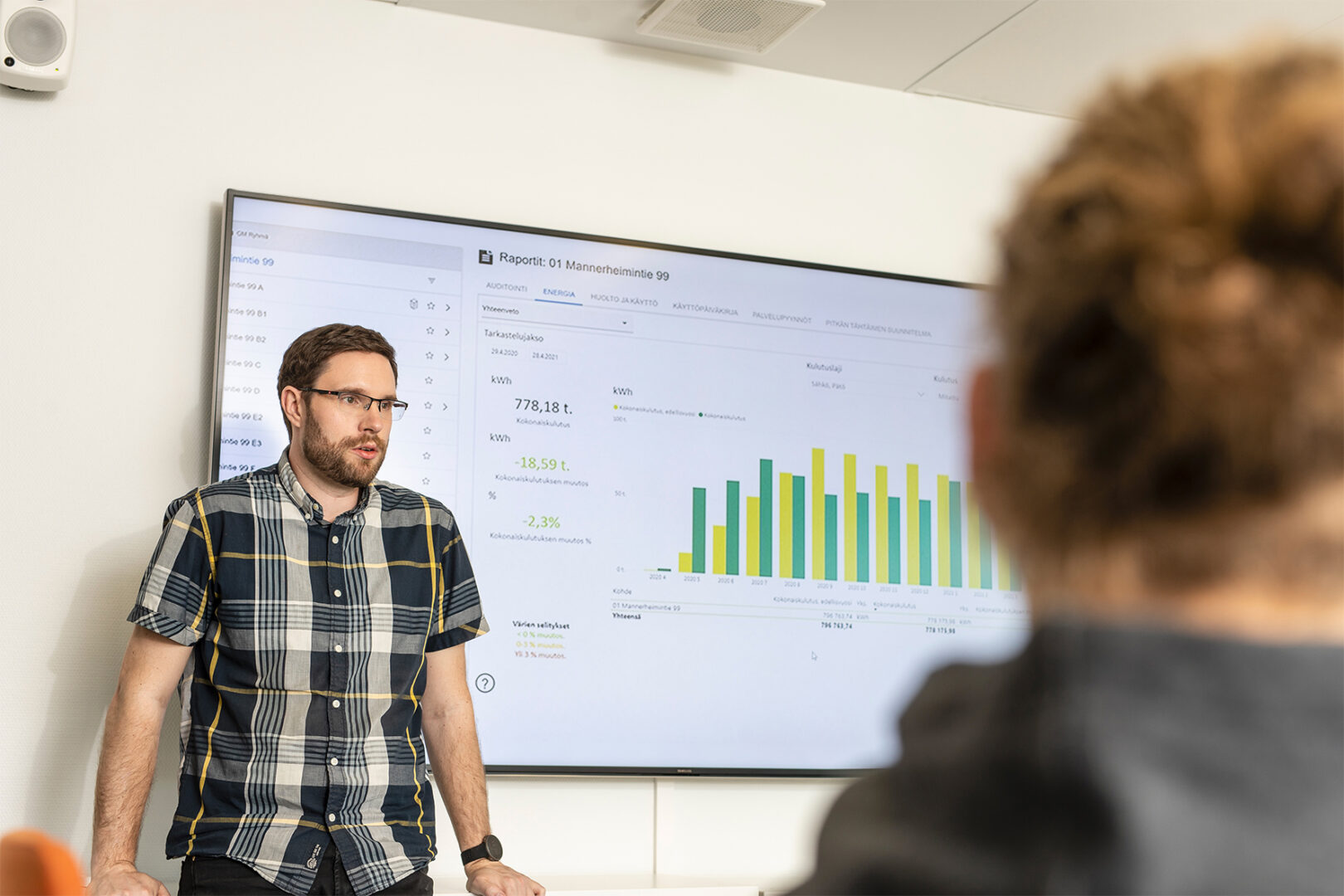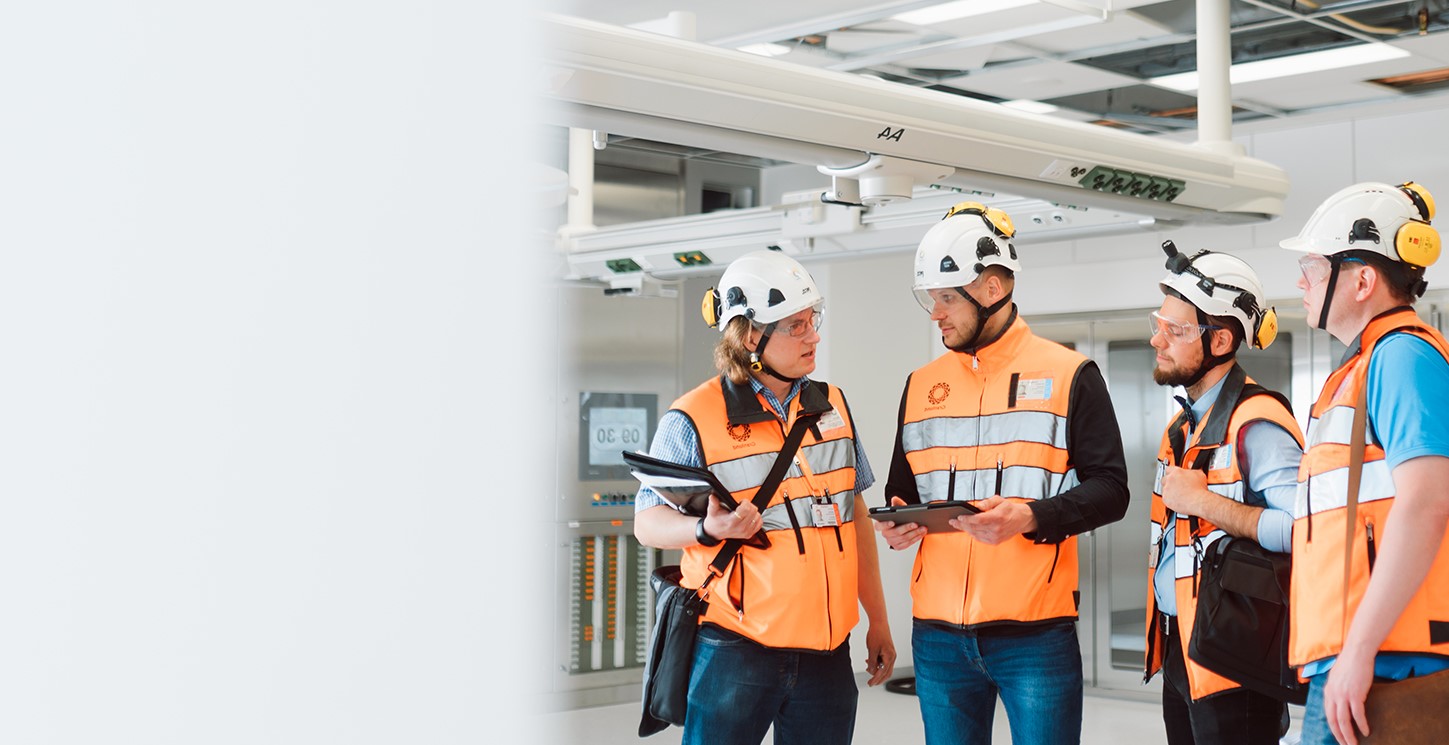
Data and digitalisation open doors to the future
Data and digitalisation improve the productivity of the real estate and construction sector.
Data for the real estate and construction sector
At Granlund, we believe that data and digital tools should serve all operators in the real estate and construction sector, from investors and developers to property users and maintenance staff.
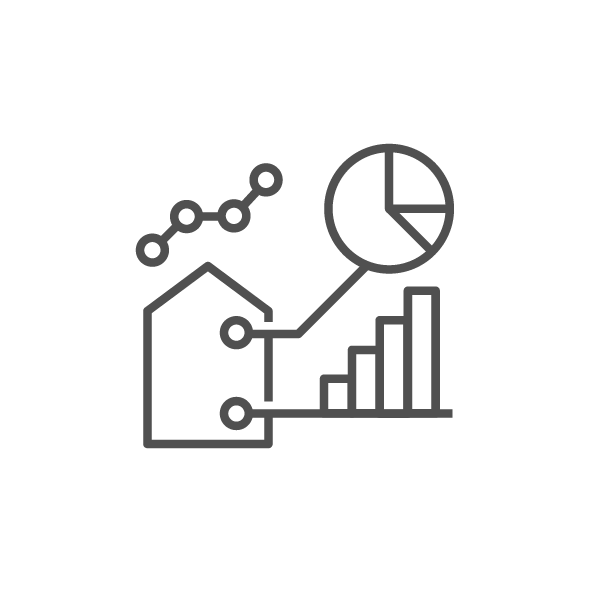
Digitalisation leads to improved productivity
When information flows and is digitally managed at all stages of the property’s life cycle, clear cost savings can be achieved, the efficiency and scheduling of planning and construction can be improved, production can be enhanced and maintenance processes can be made more efficient.
NEW:
Waste Data Playbook
The requirements for waste sorting and reporting have increased and will continue to do so, especially as recycling rate targets are raised.
This handbook serves as a simple guide to understanding a very complex topic. Its purpose is to help manage the ever-growing volume of waste information.
Our goal is to improve the accuracy and resource efficiency of environmental reporting related to waste.
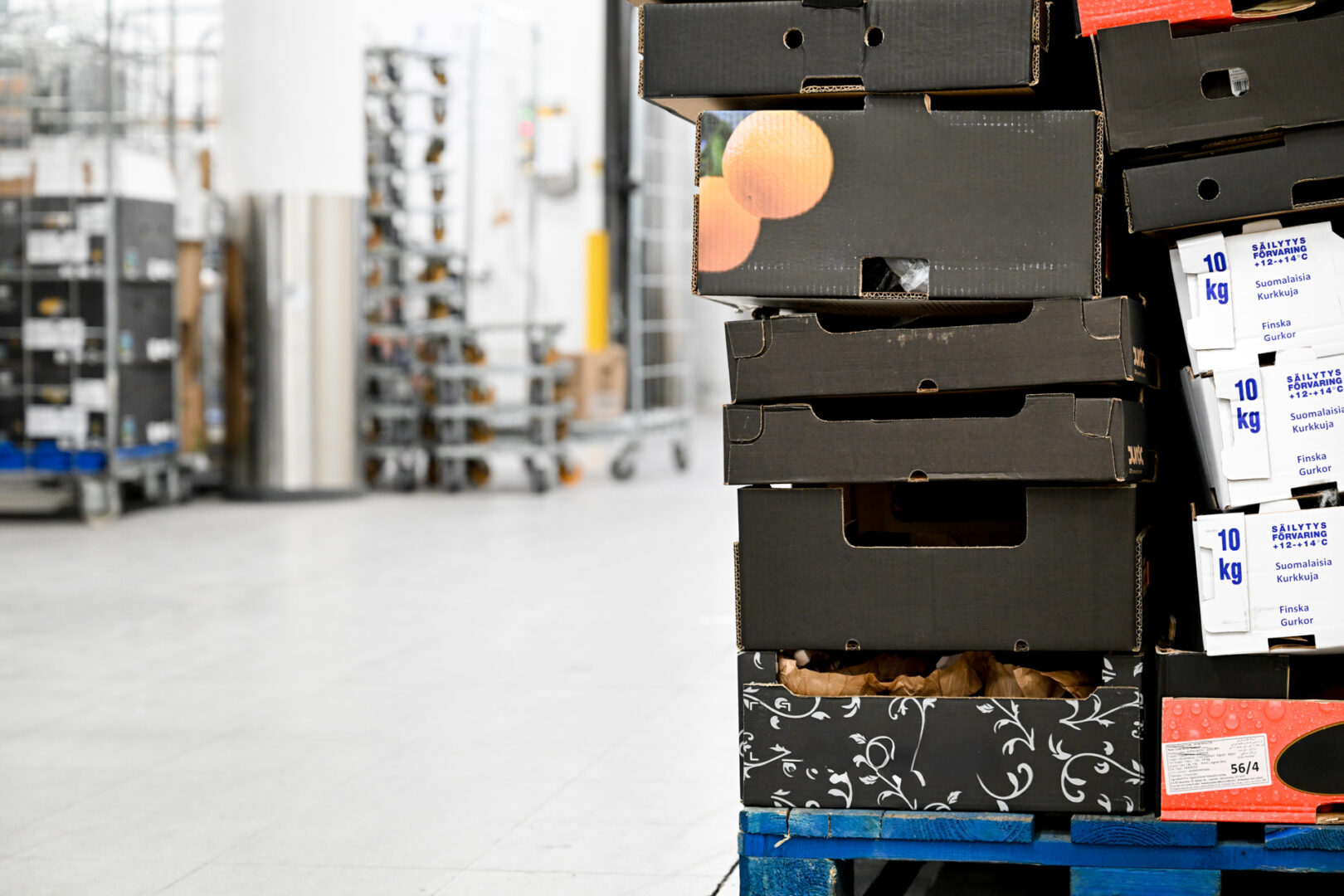
Download the Playbook with this form
Smart Building – it’s all about ease, productivity and users’ well-being
The Smart Building service supports the user of the premises and automatically takes the user’s needs into account based on the number and profiles of the people in the building or their preferences. To achieve the best results, smart solutions must be taken into account already when setting targets for the project.
User experience the focus in smart buildings
We help customers identify the features of the building that both create value for their business and meet the needs of future users of the premises. Consulting users at an early stage makes it easier to gain an insight on the functionalities that they expect from the property and the way the functionalities affect MEP design, for example.
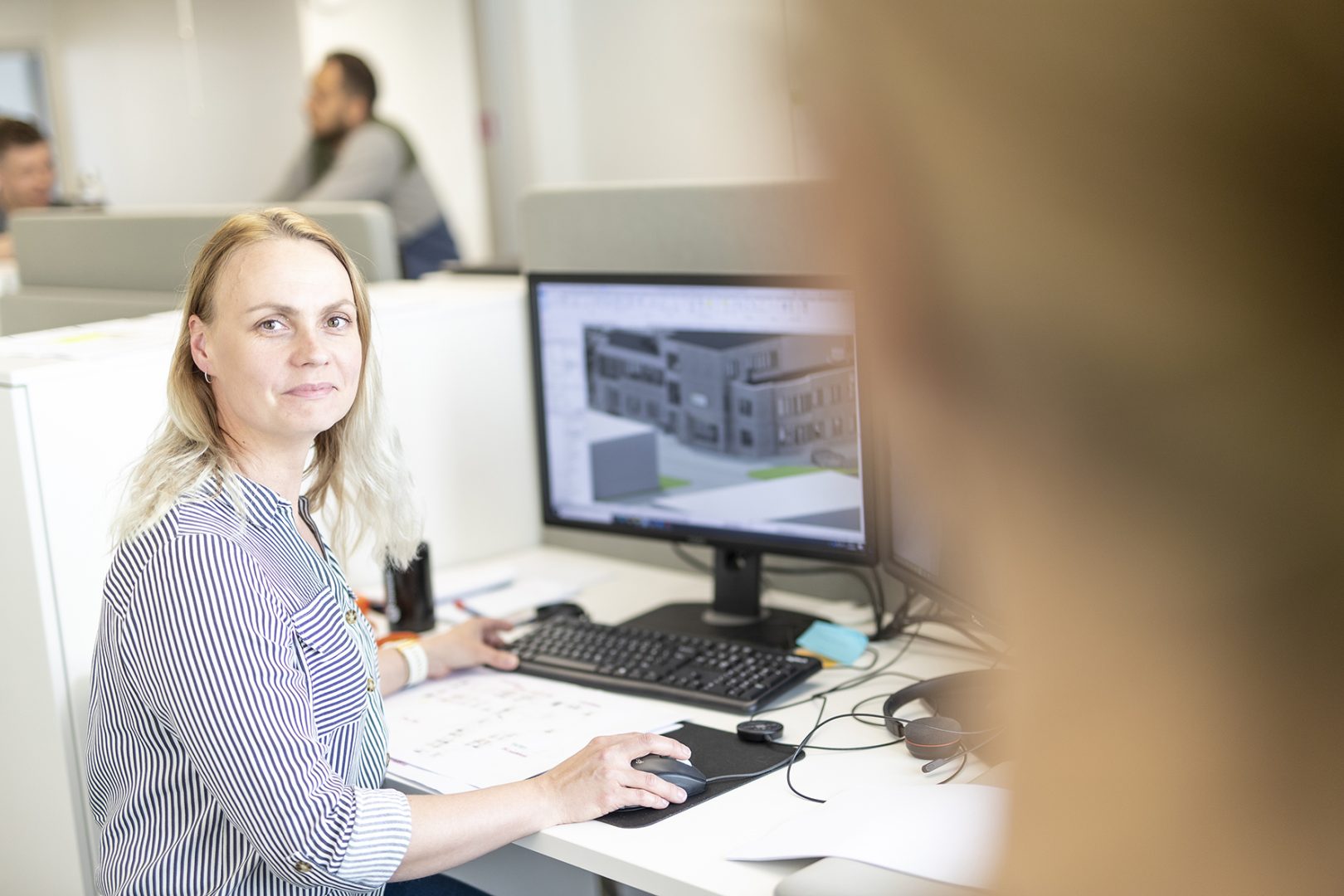
Data and digitalisation to support construction projects
In construction projects, we emphasise the importance of creating a shared overview for all parties involved in the project, which is particularly highlighted in the case of major projects with a lot of moving parts. Without digital tools, project data management would be impossible in today’s demanding projects.
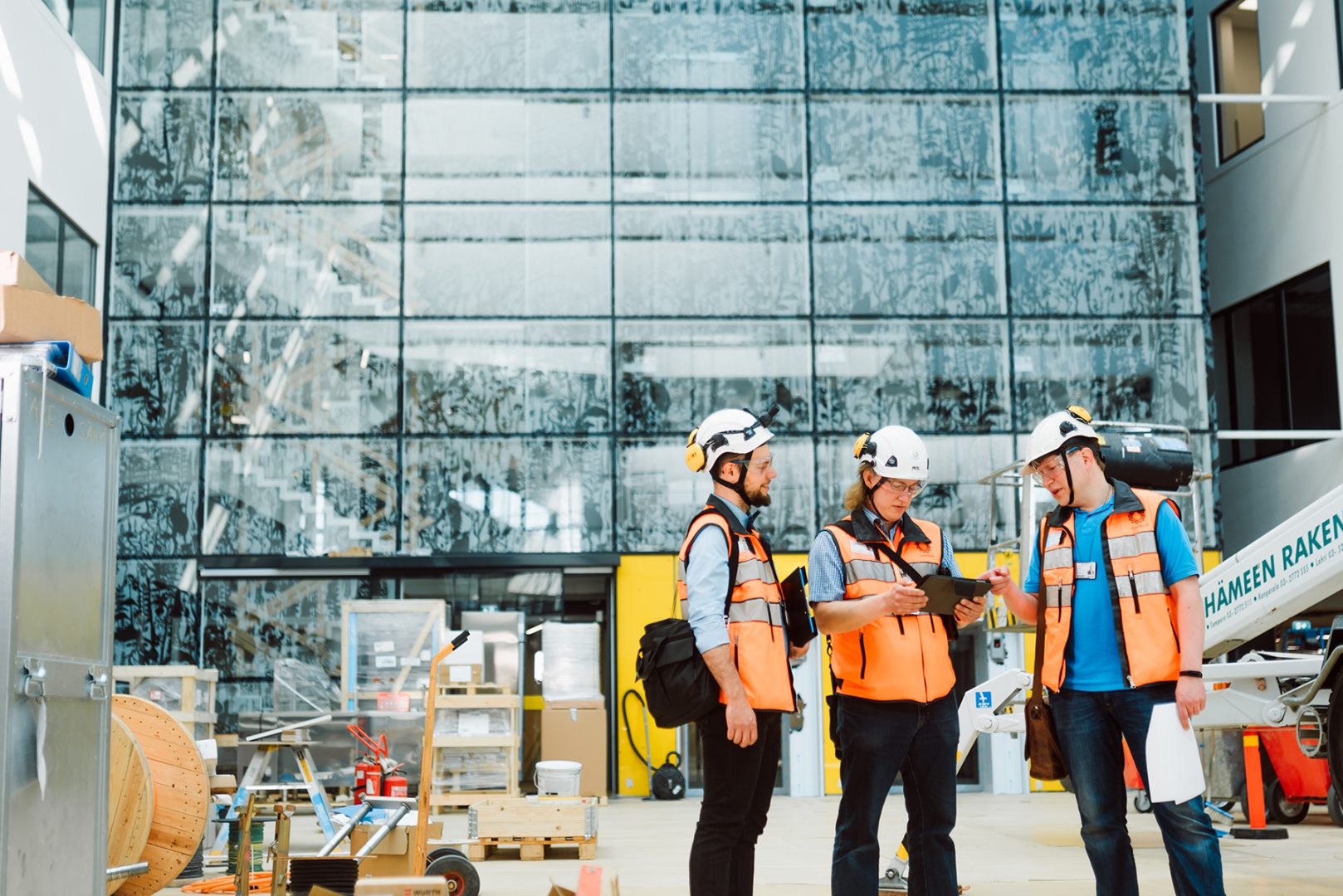
Granlund’s project development services are based on data
The project development stage is an important part of a successful construction project because that is when energy, sustainability, life cycle and quality objectives of the project are set.
To support project development, we have developed a benchmark database to accurately assess costs already at the early stages of the project.
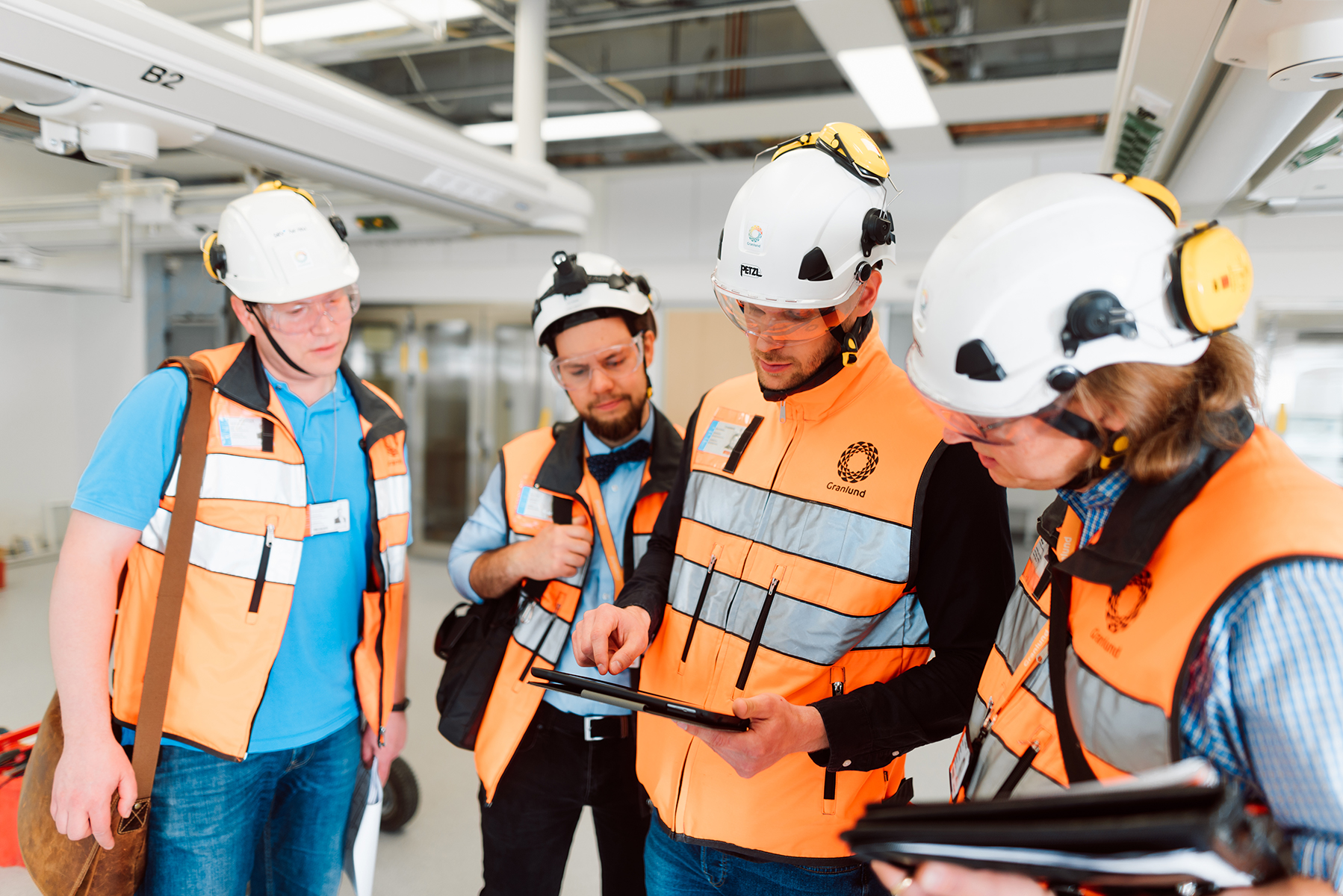
4D design
Granlund’s 4D design increases the productivity of construction projects and prevents schedule and cost-related risks. Through visualisation, we support the management of the construction site as well as implementation planning, for example, in terms of schedules, costs, safety or carbon emissions.
Digital property management
With data and digital solutions, higher quality can be achieved with less. Making the right decisions is easier on the basis of reliable data.
The benefits of using data can be seen, for example, in cost savings in energy consumption, the reliable operation of engineering systems and the efficient management of the service network. The managed condition of buildings and effective condition management also have an effect on the cash flow and rental income of properties.
How to succeed in digitalising property maintenance
1.
Data is the fuel of digitalisation. The volume of data is not essential, its quality is. With huge volumes of data, you have to identify what is essential and strive for high quality.
2.
Be prepared for increasing volumes of data as operations are digitalised. Make sure that the chosen technologies are sufficient and that they allow the flow of data and its collection in the correct format.
3.
In addition to automatic sensors, data should also be collected from people. The way in which data is recorded should be taken into account when planning the processes.
4.
Ensure that operational processes are properly specified, the management system supports data utilisation and the utilisation methods and responsibilities are clear.
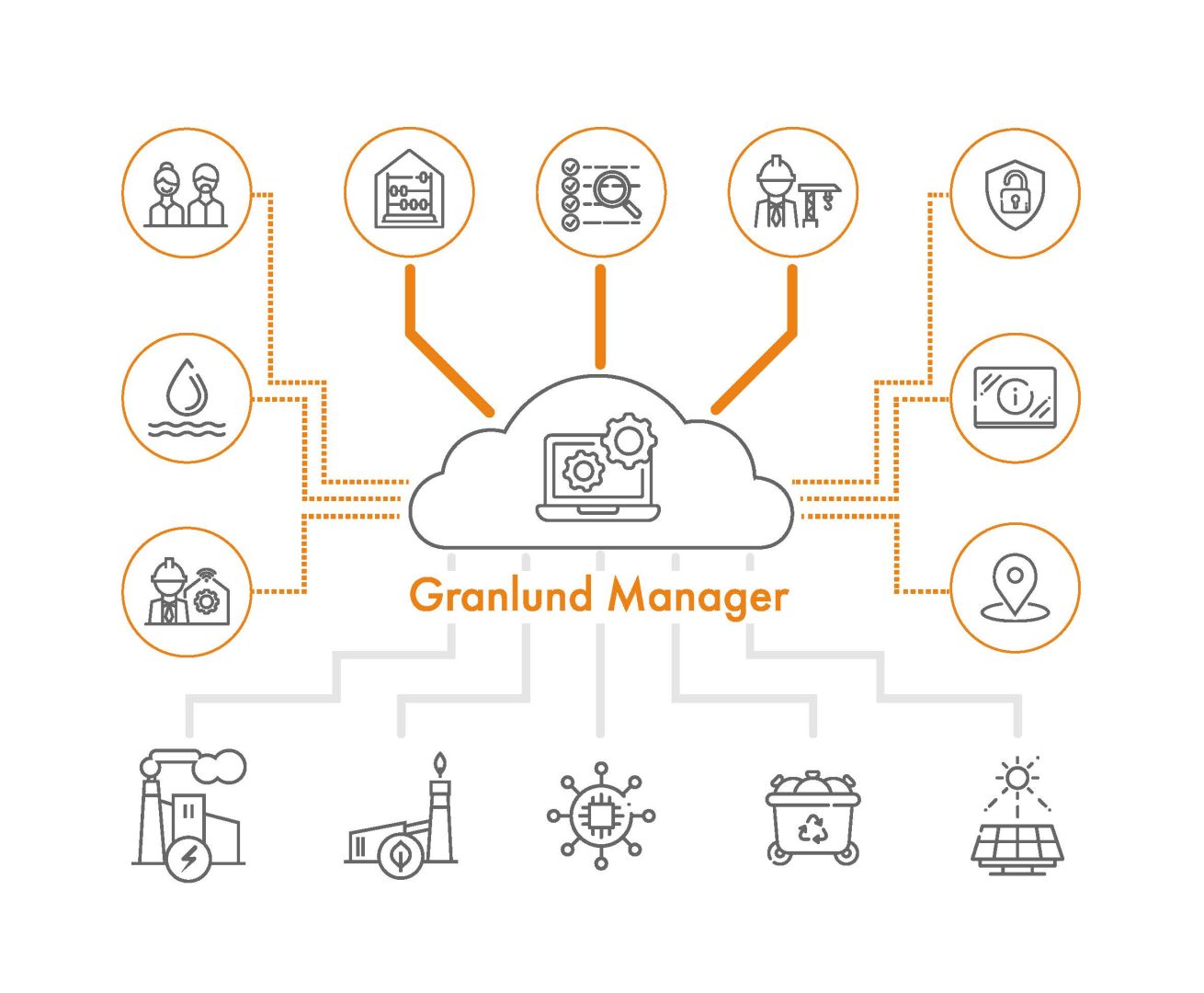
Successful integrations – functional data transfer
Granlund Manager is a comprehensive and easy-to-use maintenance management software. Numerous integrations are possible – to date, Granlund Manager has been integrated into more than a thousand systems and software.
We are ambitious about integrations of all sizes, whether a small job taking a couple of hours or an enormous one that takes months to complete. Regardless of the scope, our integrations enable data flow and utilisation.

AI Energy Survey – leveraging AI for energy efficiency!
AI Energy Survey calculates and simulates the way to achieve the highest energy savings and the extent to which CO2 emissions can be reduced based on the data in the energy certificate.
With AI Energy Survey, you can quickly determine the energy efficiency potential of an individual property or an entire property portfolio.

AI Taxonomy Survey – AI to determine the taxonomy potential of a portfolio
AI-based AI Taxonomy Survey is the most efficient calculation tool on the market for assessing the taxonomy potential of existing properties. We can quickly establish the potential of a wide range of properties to meet the EU taxonomy requirements.
Digital Twin visualises data and makes it easier to manage
Managing the huge amount of data generated by different data sources of a property manually or using separate computer-based systems is a demanding task. Digital Twin is a long-awaited solution for building information management.
A digital twin is a way to connect the physical and digital worlds through a visual 3D or 2D model. For example, the twin can display the energy consumption of premises using different colours or it can send a symbol alert if maintenance is needed in any location. Read more about Granlund Manager’s Digital Twin solution!
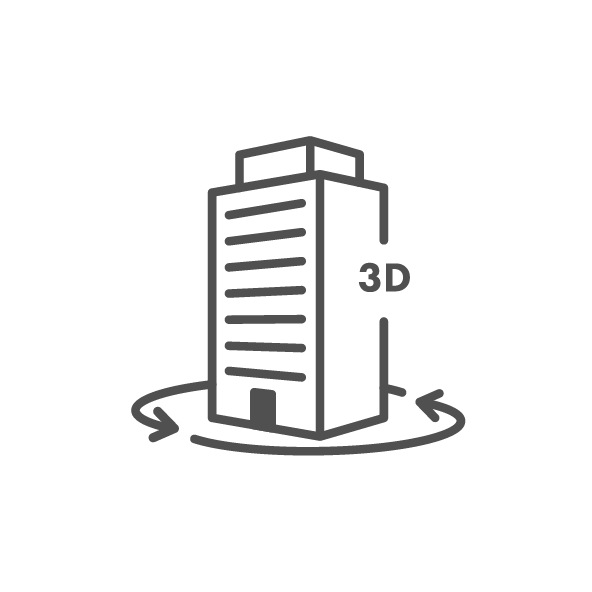
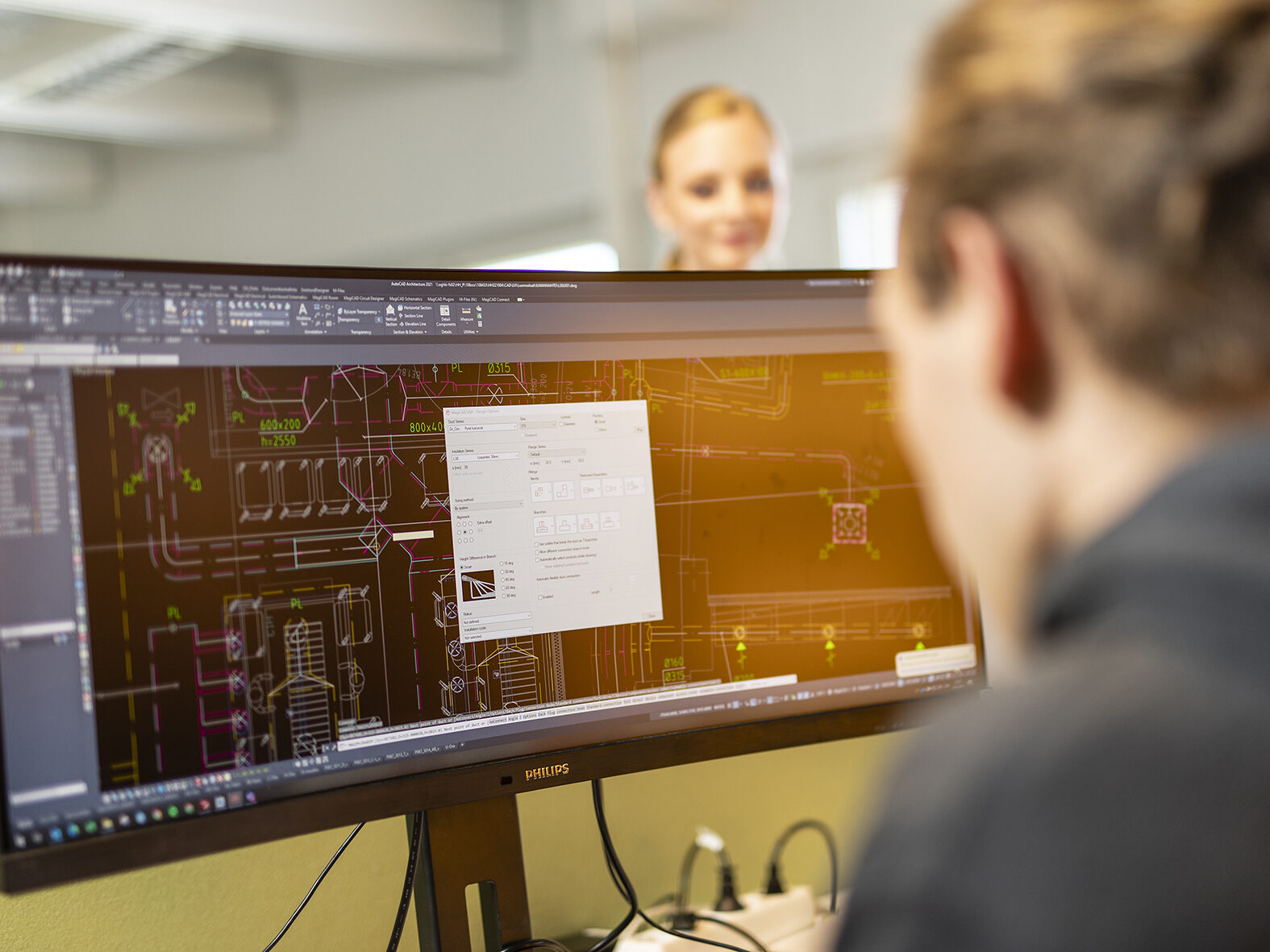
Pioneers in information modelling
Despite diverse challenges, the construction sector continuous to take positive steps. A model example of success is information model-based design, which until just over fifteen years ago seemed too laborious and utopian for many operators to become standard practice.
We have used building information modelling in our projects since the 1990s and, nowadays, we use coordinated BIM models to support property maintenance, in addition to construction sites. For example, our proprietary property management software Granlund Manager can use the building information model from the project design phase.
Our designers use the best digital tools, BIM and design software available. We create building information models with Revit, MagiCAD and CADMATIC software and complement them with our proprietary information management solutions, such as the Equipment data management software.
Why Revit is increasingly used in electrical design – benefits and challenges
Revit has revolutionised BIM-based design, although there is still room for improvement. For electrical designers, Revit is the preferred tool in BIM projects, and clients increasingly demand it.
Revit use improved communication between designers and facilitated the design work.
Timo Kamppuri
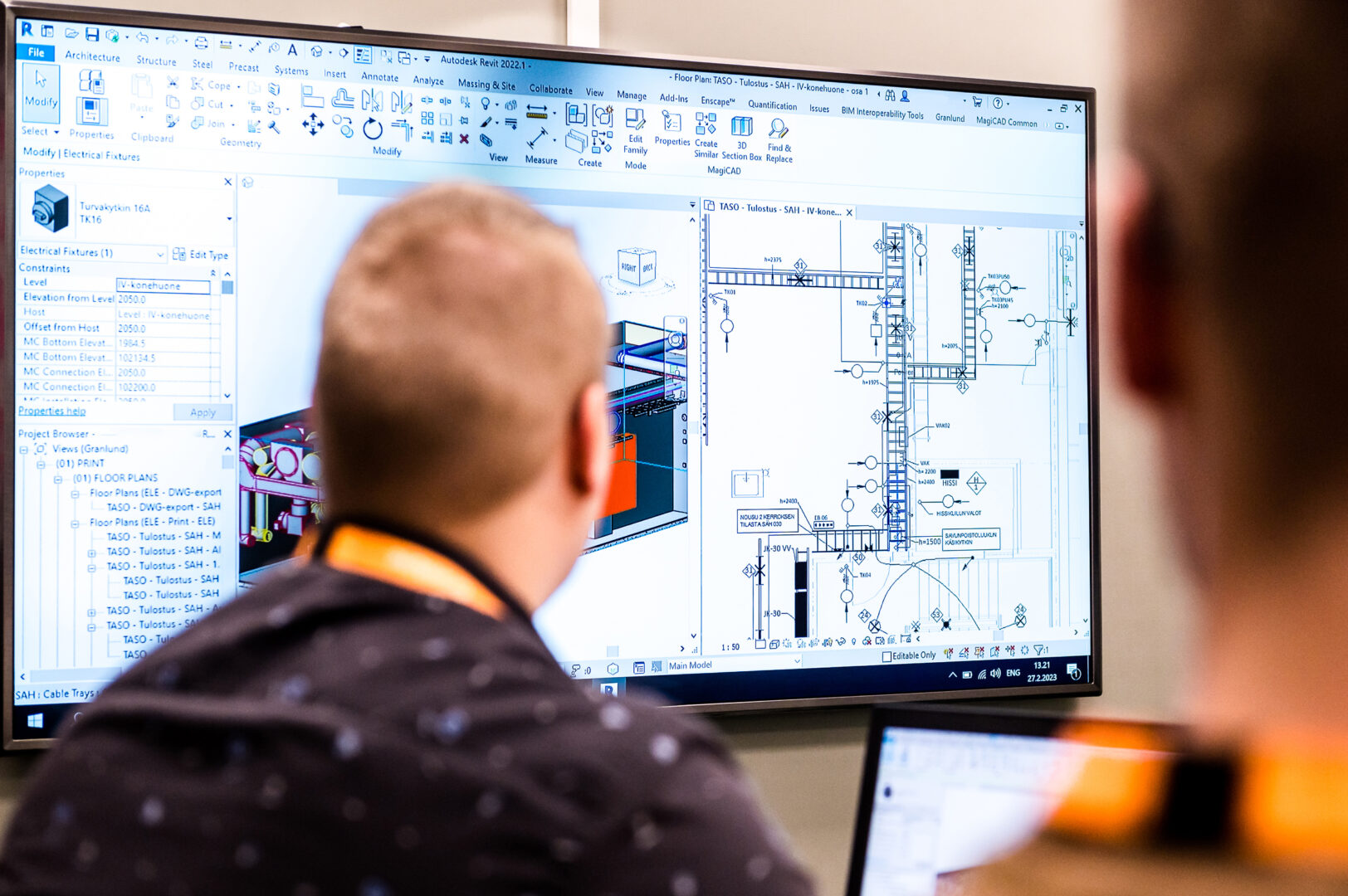
Our white papers
Would you like to discuss the topic in more detail? Contact us
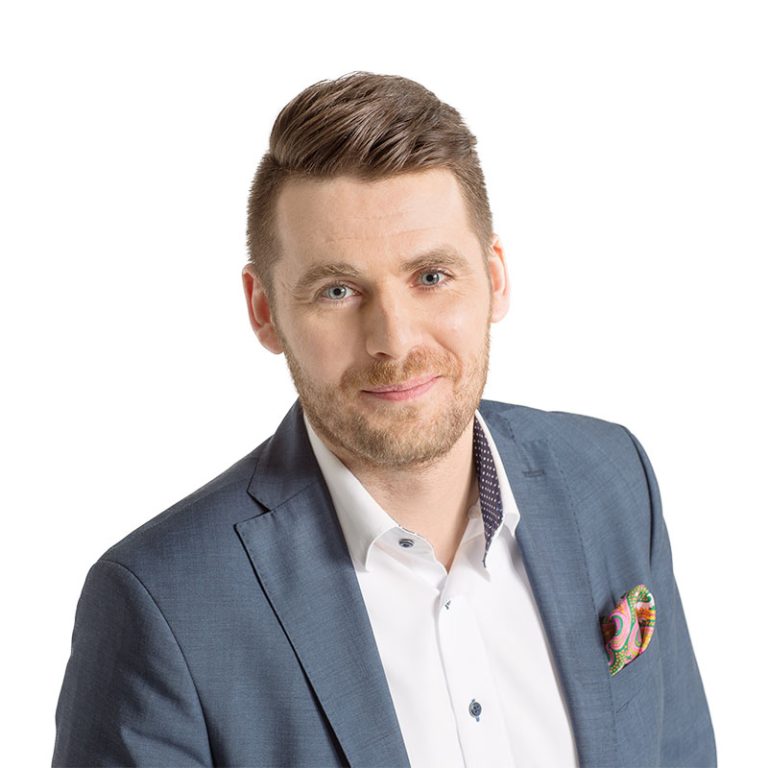
Ken Dooley

Ville Reinikainen

Topi Korpela

Vili Tuomisaari

Tero Järvinen

Juho Lepistö
Our other strengths
Energy
Energy has been at the core of our operations since our founding in 1960. We have extended our carbon handprint to the entire lifecycle of properties.
Sustainability
Sustainability is a key part of Granlund’s operations. We can also help you to be one of the good guys: sustainability is incorporated into all of our services.
Productivity
New business models, refined collaboration, modern IT solutions and strong lifecycle management models are needed to improve productivity in the construction sector.
Ask for more information or request a quote
Tell us about your project or what kind of service you need. We will get in touch with you shortly.
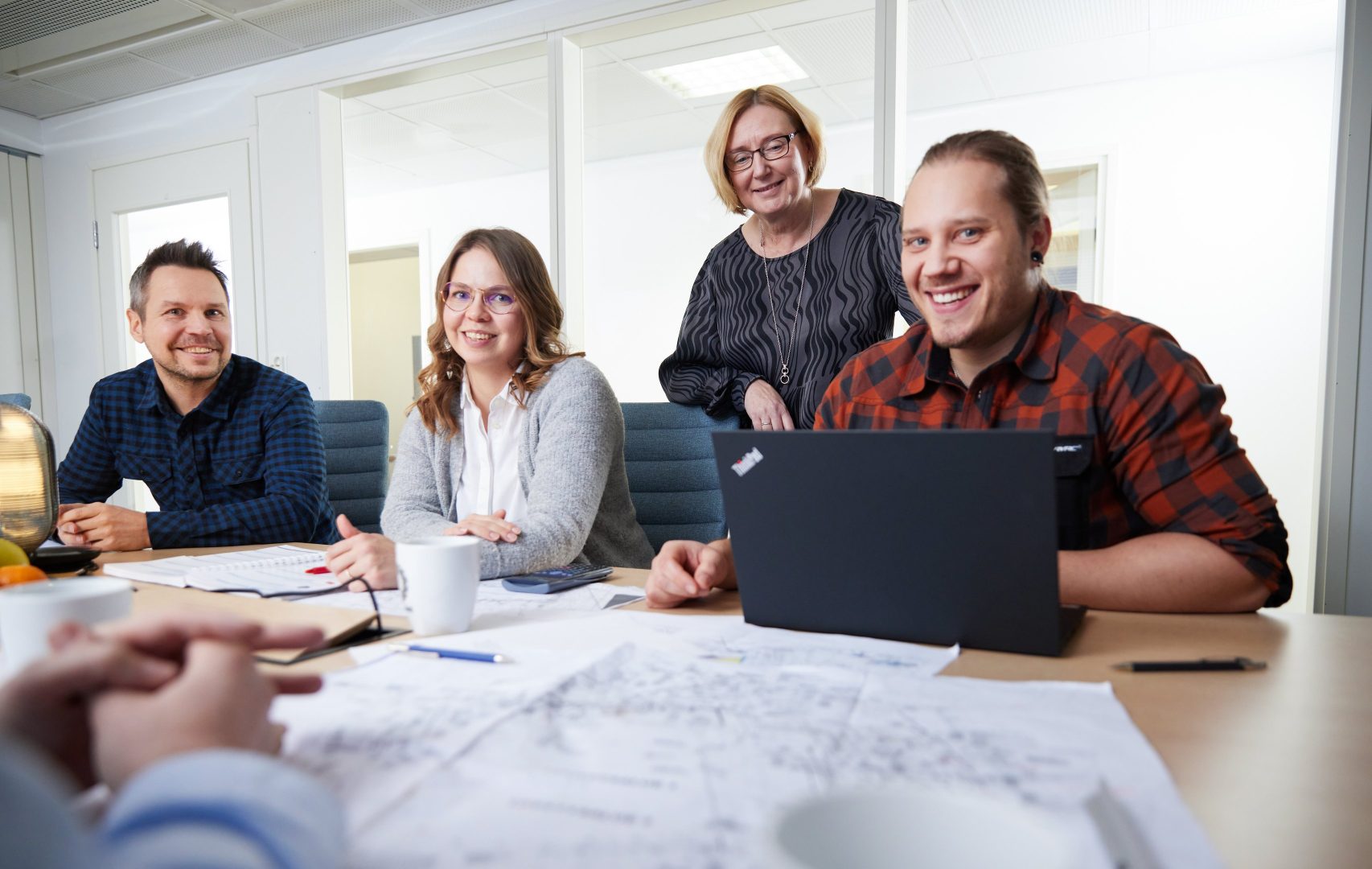
Find your nearest contact person
Subscribe to our newsletter
Be amongst the first to hear about the latest news and trends relating to Granlund and the real estate and construction sectors

